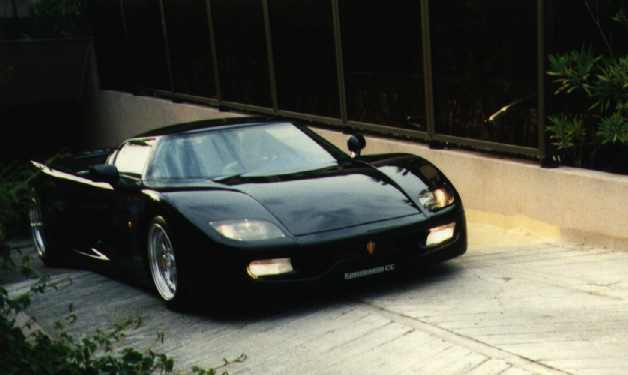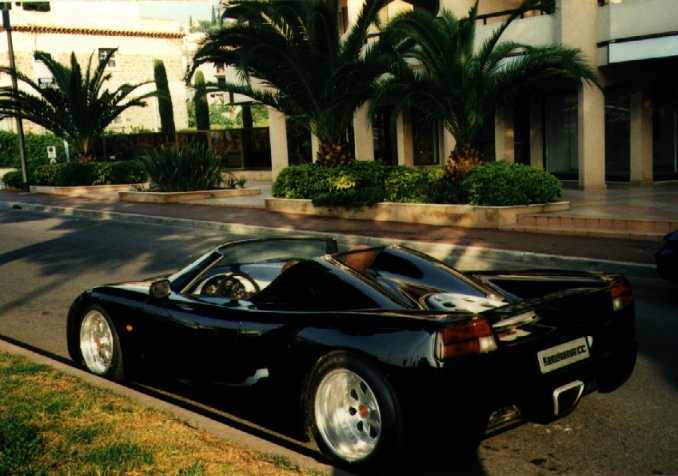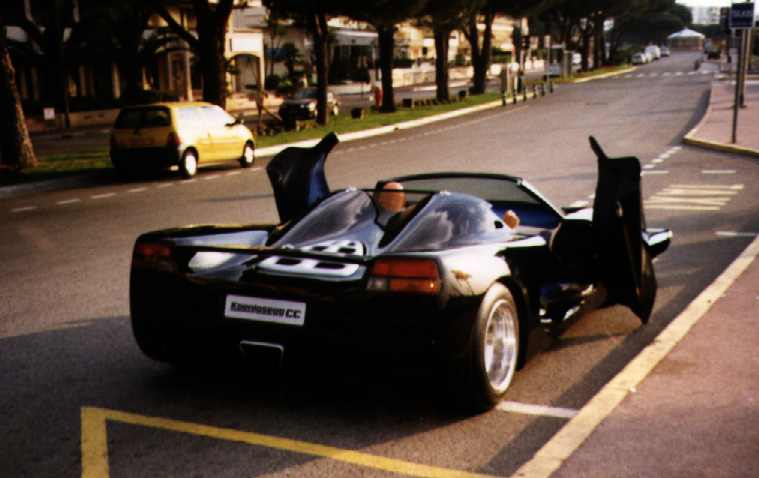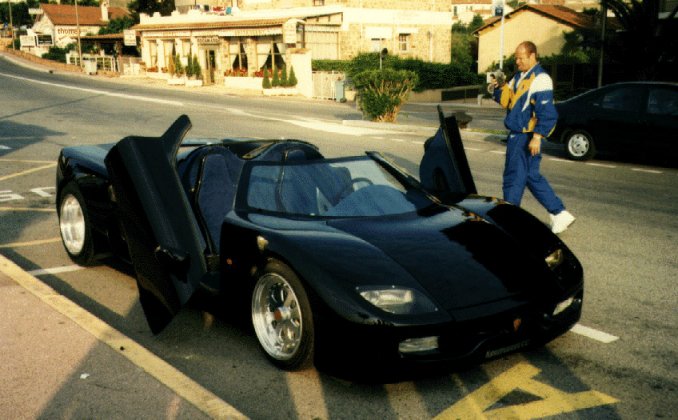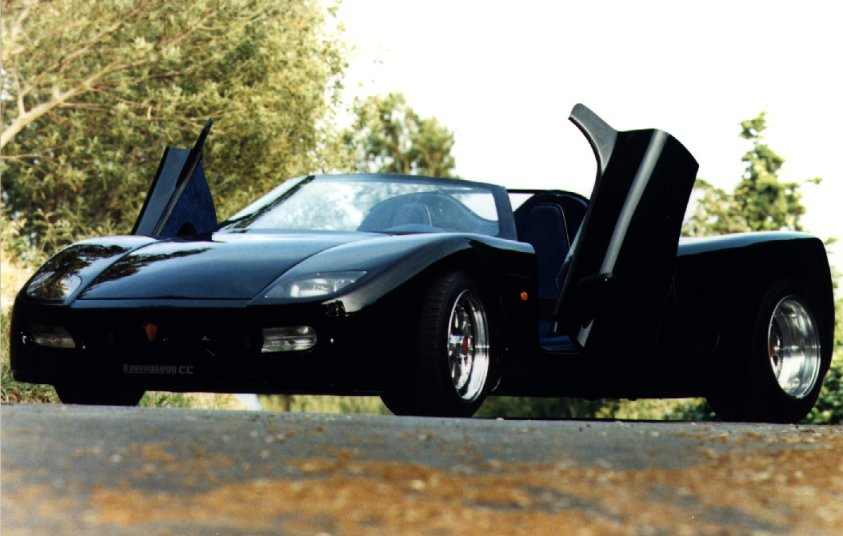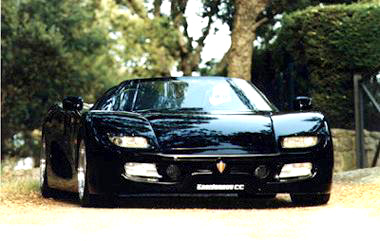1998 Koenigsegg CC Concept
Christian von Koenigsegg grew up with the dream of creating the perfect sportscar. A car that in every detail would offer the ultimate driving experience, that would unite aesthetics and unequalled competence. This dream was based on his clear perception that all existing sports cars still lacked certain qualities, that there were artistic improvements to be made and a revolution in technology that car manufacturers ignored.
The Koenigsegg project is launched. With a long tradition of building high quality cars and a large number of suppliers to the racing car industry, Sweden offered a suitable breeding ground for the development of a world-class sportscar.
The concept for this supercar set from the start, a two-seat mid engine construction with a hardtop, all based on state of the art Formula 1 technology. A network of competent designers and engineers, with connections both to the Swedish car industry and the universities, were tied together.
Specs & Performance
| engine | V12 |
| valvetrain | DOHC 4 Valves / Cyl |
| displacement | 3820 cc / 233.1 in³ |
| power | 410.1 kw / 550 bhp @ 9000 rpm |
| specific output | 143.98 bhp per litre |
| bhp/weight | 611.11 bhp per tonne |
| torque | 500.0 nm / 368.8 ft lbs @ 9000 rpm |
| body / frame | Honeycomb Carbon Fibre |
| driven wheels | Mid Engine |
| front tires | F 235/45ZR-17 |
| rear tires | R 315/45ZR-17 |
| front brakes | Vented Discs |
| f brake size | x 380 mm / x 15.0 in |
| rear brakes | Vented Discs |
| r brake size | x 295 mm / x 11.6 in |
| steering | Rack & Pinion |
| curb weight | 900 kg / 1984 lbs |
| wheelbase | 2660 mm / 104.7 in |
| front track | 1660 mm / 65.4 in |
| rear track | 1660 mm / 65.4 in |
| length | 4190 mm / 165.0 in |
| width | 2000 mm / 78.7 in |
| height | 1070 mm / 42.1 in |
| transmission | 6-Speed Manual |
| gear ratios | :1 |
| top speed | ~354.1 kph / 220.0 mph |
| drag | 0.30 Cd |
Pictures & Galleries
1995 – Koenigsegg moves into new premises in Sweden. Production of the first prototype started developing. The newly assembled Koenigsegg team makes an extraordinary effort; in only one and a half years a superb sportscar was finished, ready for media promotion and further testing.
1996 – This was a year of heavy testing on racetracks, roads and wind tunnel. Among the well renowned race-car drivers to test the prototype were Picko Troberg, Calle Rosenblad and Rickard Rydell. They were all amazed by its outstanding performance. The concept worked. It was time to introduce the car to the prospective buyers.
1997 – Koenigsegg CC prototype is shown during the Cannes film festival and its success was recognised. The satisfactory tests and the great media coverage on the Cannes film festival, enables the company to create a finished product. An entirely new car brought into the world. Sticking to the basic concept of the prototype, the entire chassis was now made of carbon fiber, and a unique module system was developed so that the car can be configured to every desired set-up.
1998 – The Koenigsegg team worked full speed ahead for the specified product model. The car went through fifty-seven different tests in order to comply with the international certification regulations. Maintaining a low profile towards the media, all concentration was focused on the final product.
An ideal new facility near Ãngelholm was purchased, and the build up of a series production infrastructure, was started. Since almost every key part of the Koenigsegg CC is specially designed and unique, highly qualified composite engineers and CAD- CAM technicians were employed. Modelers with experience at SAAB and Bentley created the final body. A three dimensional measuring system with full CAM- capabilities was set up in the modeling workshop.
1999 â Koenigsegg acquired the blueprints, production tooling and patents for a 12 cylinder boxer engine constructed by the legendary engineer Carlo Chiti, who for many years was a head engineer at Ferrari and Alfa Romeo. The engine was designed to be used in formula 1 racing, a super lightweight, horsepower monster, that aim to push the Koenigsegg CC beyond the 400 Km/h limit. This engine is planned to be used in a future limited version of the CC.
2000 – The first production vehicle was assembled during the spring and summer. September 28th is the deadline when the entire project meets the jury of the world; the premiere at the Paris motor show. The car will be brought to the INTA test centre, Spain, for crash testing and certification. At the Koenigsegg facility, a production line capable of manufacturing the cars is being organized. A project group starts to sketch on a prototype with Le Mans specifications.
2001 â The first Koenigsegg CC´s are due to be finished and are now the prized possessions of their owners. Before the Koenigsegg CC there has only existed two cars with 100 % carbon fiber monocoque chassis truly intended for road use, the McLaren F1 and the Ferrari F50. Today the Koenigsegg CC is the only one in production. The Koenigsegg CC delivers greater performance in all aspects than any other competitor. It is probably the worlds fastest series manufactured car. Koenigsegg offers race track test drives to buyers, and presents a whole new way of thinking about retailer and customer support, based on mobile Internet.
2003 – Koenigsegg plans to produce a special version of the Koenigsegg CC, the B12 S. The cars will be built in limited edition consisting of only 15 cars, using a highly modern supercharged unique Koenigsegg engine with 12 direct ignition coils, 4 valve configuration, all aluminium block, DOHC and 7 bearings on the crankshaft dry sump lubrication. This engine construction has shown superb durability in offshore racing.




